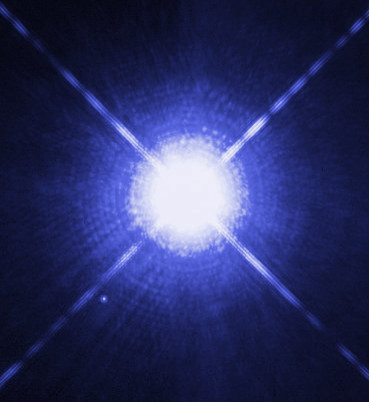Runaway Stars Could Lead To New Insights On The Galactic Center’s Black Hole, Stellar Clusters

Researchers tracking the path of a runaway star ended up learning more than they'd expected to.
Researchers from the Harvard-Smithsonian Center for Astrophysics, CfA, tracked the runaway binary star system LP400-22 over a five-year period using spectroscopy, astrometry, radio and X-ray data and published their findings in the recent Monthly Notices of the Royal Astronomical Society. They were hoping to learn about the supermassive black hole at the center of the Milky Way, and they discovered some unusual features of the only known runaway white dwarf pair.
Stars traveling at a higher speed, or velocity, than their surrounding environment are classified as runaway stars. Hypervelocity stars are traveling much faster than runaway stars and researchers from CfA previously discovered such a star, traveling at speeds of more than 3 million kilometers per hour, close to 2 million miles per hour. That star was once part of a binary star system, but the second star was devoured by the black hole at the galaxy's center. The star was ejected from the area around the black hole approximately 80 million years ago.
With LP400-22 the only known runaway pair of white dwarf stars, the researchers wanted to learn more about the star system, its origin and what caused its increased velocity. According to the researchers, there are two mechanisms associated with runaway star: within a binary star system one star going supernova thus freeing the second star or getting ejected from a dense stellar cluster.
Over the course of five years, researchers observed LP400-22, approximately 1,400 light-years from Earth, and discovered that it did not originate at the black hole at the galactic center. The researchers believe the runaway binary stars were originally from a dense stellar cluster and have traced their path back to likely globular clusters.
As for what caused the increase in speed, researchers ruled out a supernova as evidence of a supernova remnant, based on X-ray observations. LP400-22 may have been involved in an interaction with other star systems inside the stellar cluster or was once part of a trinary star system that was disrupted by a black hole within the cluster.
© Copyright IBTimes 2024. All rights reserved.






















